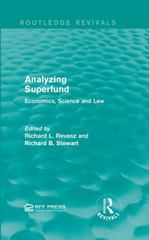Question
Extract 1 European Central Bank Cuts Interest Rates to Zero Amid Fears of Fresh Economic Crash The European Central Bank (ECB) has cut interest rates
Extract 1
European Central Bank Cuts Interest Rates to Zero Amid Fears of Fresh Economic Crash The European Central Bank (ECB) has cut interest rates across the eurozone to zero as it unveiled an unprecedented package of growth-boosting measures against the backdrop of a fragile global economy. Amid growing concerns of a fresh economic crash, the ECB surprised financial markets by cutting interest rates in the region to an all-time low, expanding its Quantitative Easing (QE) programme and reducing a key bank deposit rate further into negative territory. The ECB chief, Mario Draghi, implied interest rates would stay 'very low' for at least another year and predicted the region would remain mired in negative inflation for months to come. However, he insists the region was not in full-on, Japan-style deflation and to rebuff growing fears that central banks have run out of ammunition to fight sluggish economic growth and revive price rises. Negative inflation is viewed as economically dangerous because falling prices can generate a downward spiral of economic growth, by dissuading businesses and consumers from spending in the expectation that prices will fall further. The Frankfurt-based institution hopes its latest barrage of measures will get money into the financial system by discouraging banks from holding on to deposits. The expectation is that financial institutions will instead lend out money as cheaply as possible to businesses and households. In addition to reducing the main interest rate of Eurozone from 0.05% to nought, the ECB also cut its deposit rate by 10 basis points, further into negative territory to -0.4%. The latest cut in the deposit rate means the ECB will be charging banks more to hold their money overnight, with the aim of encouraging them to lend it to businesses. The euro initially plunged as record low interest rates were announced, before bouncing back as Draghi implied this was the lowest the central bank would go on borrowing costs. The ECB also expanded its QE programme to 80 billion (61 billion) a month, up from 60 billion. Under QE, the central bank pumps money into the Eurozone by buying bonds off financial institutions in the expectation that they will reinvest the proceeds elsewhere in the European economy. Economists, however, are becoming increasingly sceptical of the power of monetary policy as central banks around the world resort to increasingly unconventional measures to shore up their economies. "While superficially impressive, this haphazard approach will probably have limited impact on monetary conditions and the economic outlook," said Simon Ward, chief economist at Henderson Global Investors. Analysts at the consultancy Capital Economics were less sanguine about the overall ECB package: "There is no guarantee that its latest 'bazooka' will be any more effective than previous ones in securing the strong and sustained growth required to eliminate the threat of deflation in the currency union and allow the peripheral countries to tackle their debt problems. The ECB has belatedly delivered, but it cannot work miracles."
Source: Adapted in part from The Guardian, 10 March 2016.
Extract 2
Draghi Expands ECB Stimulus With More QE and Lower Rates The president of the European Central Bank (ECB), Mario Draghi, delivered interest-rate cuts and more bond purchases in a renewed attack against the threat of deflation, before whipsawing the euro by saying it is done with lowering borrowing costs for now. The euro fell as much as 1.6% against the US dollar earlier when the initial monetary stimulus package exceeded market expectations. The currency then recovered some losses as the ECB president signalled a diminished prospect of further cuts. Draghi has repeatedly said policy makers are willing to do what is necessary to revive inflation and underpin the region's upturn. The ECB president told a press conference in Frankfurt that economic growth outlook has been revised down, reflecting weakening global prospects. Forecast for Eurozone inflation for 2016 is also slashed to 0.1% from 1%.
Source: Adapted in part from Bloomberg, 10 March 2016.
Questions
(a) Deducing from both extracts, identify and explain two roles of an institution, such as the European Central Bank (ECB).
(b) 'Stricter capital and liquidity rules could lead to huge funding gaps, reducing lending, which could kill off economic recovery. Therefore, it is only right that amid growing concerns of another economic crash, financial institutions should be encouraged to lend out money as cheaply as possible to businesses and households.' Comment on the above statement.
c) How different is quantitative easing from conventional open market operations?
(d) Analyse the link between unusually low rates of interest and the sharp fall of the euro against the US dollar.
(e) Using diagrams, explain how the monetary measures of the ECB are supposed to be 'growth-boosting' in theory and discuss the practical circumstances under which it 'cannot work miracles'.
Step by Step Solution
There are 3 Steps involved in it
Step: 1

Get Instant Access to Expert-Tailored Solutions
See step-by-step solutions with expert insights and AI powered tools for academic success
Step: 2

Step: 3

Ace Your Homework with AI
Get the answers you need in no time with our AI-driven, step-by-step assistance
Get Started


